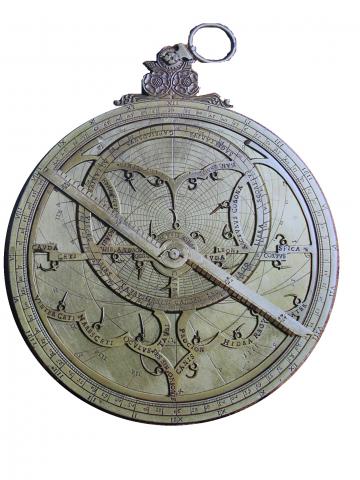Astrolabe

Background
The astrolabe is an ancient astronomical instrument that is used to locate the stars at a certain time. It can also be used to help identify the time or position of the user given an observation of the stars. The astrolabe consists of three parts, the mater which is the compass-like ring. In the middle of the mater a disc called the tympan has inscribed lines that reflect the compass directions (azimuth) and altitude lines reflecting the celestial sphere for a given latitude. Around the outside of the mater are lines for the hours of day. Inside the tympan is a framework called a rete which has the ecliptic plane and pointers for the brightest stars. The rete rotates around inside the mater ring. Finally a narrow rule is used to help read star positions and times. As the rete is rotated one can see the approximate positions of stars and constellations in the sky graph marked on the tympan.
Directions
- Print the Mater, Rete and Rule on a color printer.
- Cutout the outside of the three shapes with scissors.
- Glue the shapes to card stock or manilla envelopes.
- Use cut out the detailed shape of the rete.
- Assemble the three parts with a brad in the center going from the rule, through the rete and into the middle of the tympan at the black center marks.
